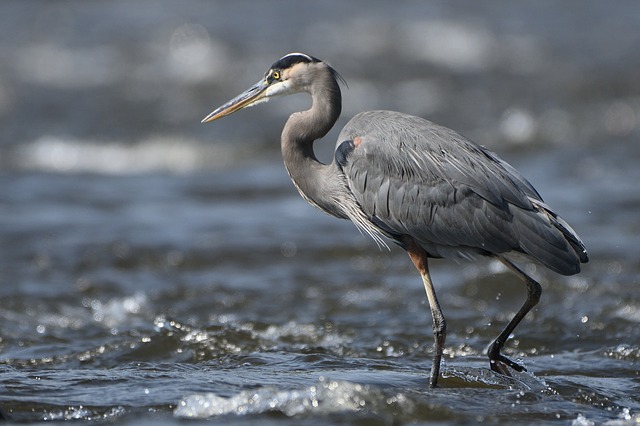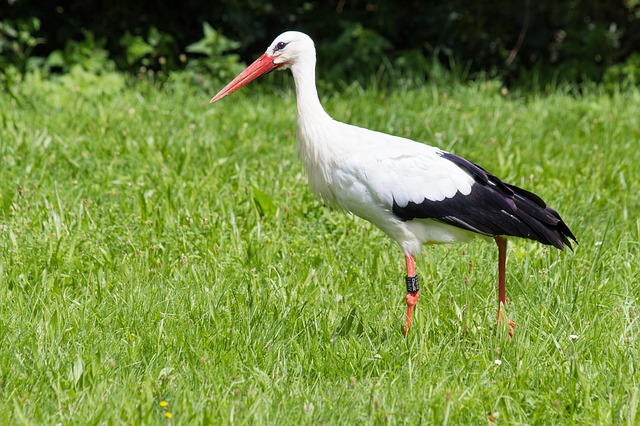
Where to put a bat house is an important decision. If it’s not in an appropriate spot, you may be putting your resident bats in danger. Or you may end up with an empty house since no bats are interested in living in it. So you’ll need to know a few things first in order to pick the right area.
Benefits Of Bats
Having bats in your backyard offers some big advantages. Because most species consume insects they can help to keep the mosquito population down to a minimum. But of course, they will also eat many other insects that are considered to be backyard pests too. And don’t forget the guano.
Bat poop is a fabulous fertilizer and having your very own constant supply is another one of the many bat house benefits you can expect. Bats also help to pollinate many different varieties of plants. However, you can only enjoy these advantages if bats decide to move in. While you can’t force them to pick your bat house as their home, by placing it somewhere that suits their needs they will be much more likely to take up residence in it.
Water
One of the best ways to entice bats into using your bat house is by installing in near water. Bats need water to survive and prefer to roost nearby. Water sources also provide an ample supply of insects for them to eat. Ideally, this means placing a bat house within a quarter of a mile of a river, lake, stream, or pond although manmade options such as swimming pools work too.
Near A Current Roost
Many homeowners already have a roost on their property and are planning to bat-proof the location in the near future. This is often the case in attics or barns. By hanging a bat house as close as possible to the roost before the bats are excluded from it, you can often get them to move right in.
Sunlight
Bats like to roost where it’s hot. So the best bat house spots are areas that receive a lot of sunlight. An area that has at least six hours of direct sunlight per day would be ideal. To get as much midday sun as possible, placing your box so that it is facing the southeast can be a big help.
Not On Trees But Near Them
Many people assume that hanging a bat house on a tree is the most natural solution. However, this is not usually the case. In fact, trees make it easier for predators to climb up and get into a house for a bat snack. Trees also may provide too much shade and therefore don’t allow a house to heat up to the temperatures that bats prefer.
Instead, you can mount a bat house on a pole or the side of a building. (Houses that are mounted on buildings tend to heat up faster which is appealing to bats.) Your bat house should be close enough to trees so that bats can use them to escape from owls and other flying predators that may try to swoop down on them. But at the same time, it should be far enough away from trees that it isn’t shaded by them.
Other Bat House Considerations
You should install your house from ten to twenty feet off the ground. Any branches, shrubs, or possible obstructions close to the entrance of the house will need to be cut back or removed so that the bats can get in and out safely. Keep in mind that an area where the bats will be constantly bothered by people is of course not the best place to put a bat house.
Also, be sure not to place your house directly adjacent to a road. This can put bats at risk of being injured by passing vehicles. Areas where there are strong winds, such as hilltops, should also be avoided since they may cause the house to fall in the future.
The location is the most important factor in attracting bats to a house. And now that you know where to put a bat house in your yard, and where not to, you’ll be able to increase the odds of having your very own resident bats move in.
Start Shopping for Bat Houses!
Alligator Pictures
The American alligator is a large predatory reptile that inhabits the southeastern United States. It’s a fascinating animal with many interesting things about it. And we’ve collected some of the best alligator pictures to help show you just how amazing they are....
How Long Do Great Blue Herons Live?
The life expectancy of birds is known to be closely related to their size. So as the biggest heron species in North America, how long do great blue herons live? The average life expectancy for these large birds is around fifteen years. However, surviving their first...
Where Do Great Blue Herons Live?
The great blue heron is considered to be the most widespread heron in North America. So exactly where do great blue herons live? Here’s what you’ll want to know. Great Blue Heron Range The great blue heron is found throughout most of the North American continent. In...
Where Do Great Blue Herons Nest?
While many of us have seen great blue herons their nesting habits often remain a mystery to most people. That’s because they purposely nest in hard-to-reach places. So where do great blue herons nest? Here’s the answer. A Colony Nester Typically great blue herons nest...
Do Great Blue Herons Migrate?
Do great blue herons migrate? This is something many people wonder about, especially if they’ve seen a heron during the cold winter months. And the answer is both yes and no. Here’s what you’ll want to know. Great Blue Heron Range The great blue heron has a large...
Great Blue Heron Pictures
Few species of birds are as tall, elegant, and attractive as the great blue heron. So we’ve compiled some of the best great blue heron pictures for you to admire and help you to learn more about this amazing bird! Great Blue Heron Head The head of the great blue heron...
What Do Snapping Turtles Eat?
Many people are familiar with the fact that snapping turtles have an incredibly strong bite. They use their strong jaws and sharp beak not just for defense but also for catching food. So what do snapping turtles eat? Here's what you'll want to know. Snapping turtles...
Birds That Look Like Egrets
Egrets are predatory birds that hunt and live in a range of both freshwater and saltwater habitats. These birds are usually white, and have S-shaped necks, long legs, and dagger-like beaks. However, they are often mistaken for several other types of birds that look...
Birds That Look Like Storks
Storks are large wading birds with robust bills and long legs. These tall carnivorous birds are well-known for their wide wingspans and also for building huge nests. However, they are often confused with several other bird types that have a similar appearance. So...
Birds That Look Like Herons
Herons are tall birds with long slender legs and necks. And they often wade in the water when hunting for food. Yet there are several other types of birds that may be mistaken for them. To make things more confusing many of these birds also spend time in the water and...
Great Blue Heron Facts
The great blue heron is named for its size and the grey-blue color on its wings, stomach, and back. This species has many fascinating things about it. So here are the top great blue heron facts. It's The Largest North American Heron The great blue heron is a big bird...
Are There White Herons?
Are there white herons? This is something many people wonder especially after seeing a tall all-white bird. The answer is yes! And here’s a fast introduction to them. A White Color Morph Most people are familiar with the great blue heron, a large predatory and...
Great White Heron Facts
While many people are familiar with the great blue heron, they are often surprised to find out that there’s also a great white heron. There are many things you’ll want to know about this stunning bird. So here are the top great white heron facts. The Great White Heron...
What Animals Eat Herons?
Because of their size and long sharp beaks, it can be hard to imagine that herons have any natural predators. While they do, they definitely don’t have nearly as many predators as most other types of birds. So what animals eat herons? Predators Of Adult Herons For...
What Do Herons Eat?
Great blue herons are often seen slowly wading in shallow water hunting for food. You may have even spotted one of these large birds in your own backyard pond. This leaves many people wondering: “What do great blue herons eat?” And here’s everything you’ll need to...
What Do Green Herons Eat?
The green heron is a secretive and small heron species. What it lacks in size however it makes up for in intelligence. It is particularly well-known for how it uses its smarts when hunting for food. So what do green herons eat? Read on to find out. Meet The Green...
How Does A Heron Catch Fish?
The great blue heron is well-known for its looks but also its fish-catching abilities. Whether in the wild or someone’s backyard pond these large birds are master hunters. So how does a heron catch fish? Here’s what you’ll want to know. Built For Success While herons...
The Complete Great Blue Heron Decoy Guide
Buy on Amazon A hungry heron can easily make a meal out of expensive pond fish. One of the most effective methods for protecting your pond from these smart birds is with a great blue heron decoy. Here is your complete guide to them, with all the info and tips you’ll...
How To Keep Blue Herons Out Of Your Pond
Great blue herons are one of the biggest problems that pond owners face. These birds are not only smart but can easily catch and swallow large numbers of surprisingly big pond fish. Therefore you’ll need to know how to keep blue herons out of your pond in order to...
How To Deter Herons From Your Pond
Herons are designed by Mother Nature to hunt fish. And unfortunately for pond owners, they often find pond fish to be an easy meal. So in order to protect your fish, you will want to know how to deter herons from your pond. Alligator Decoys Alligators are natural...



















